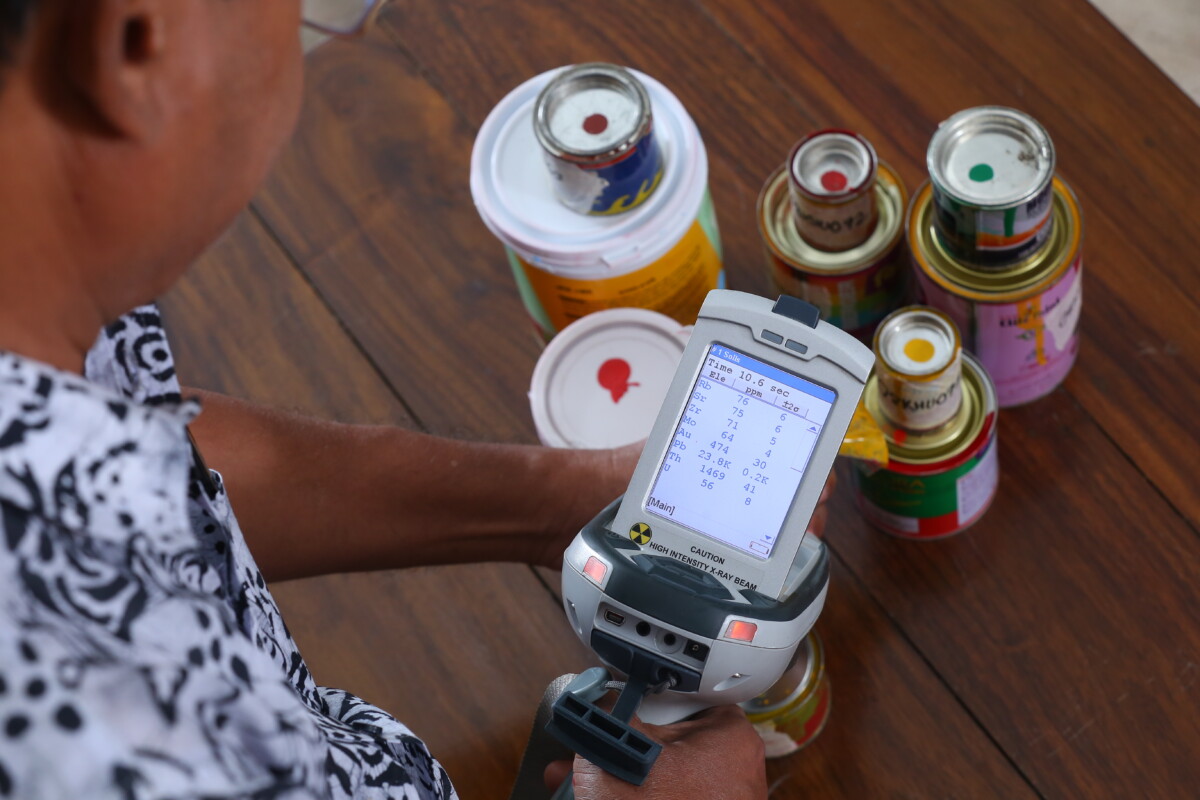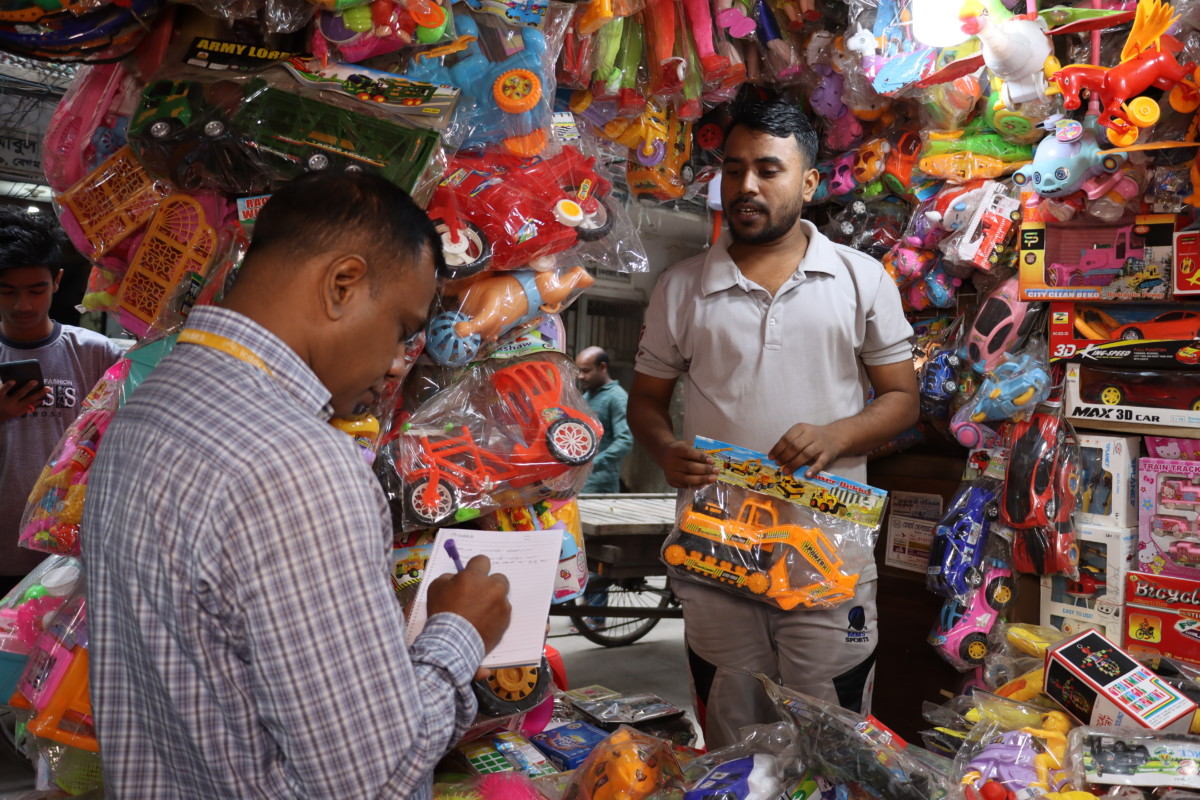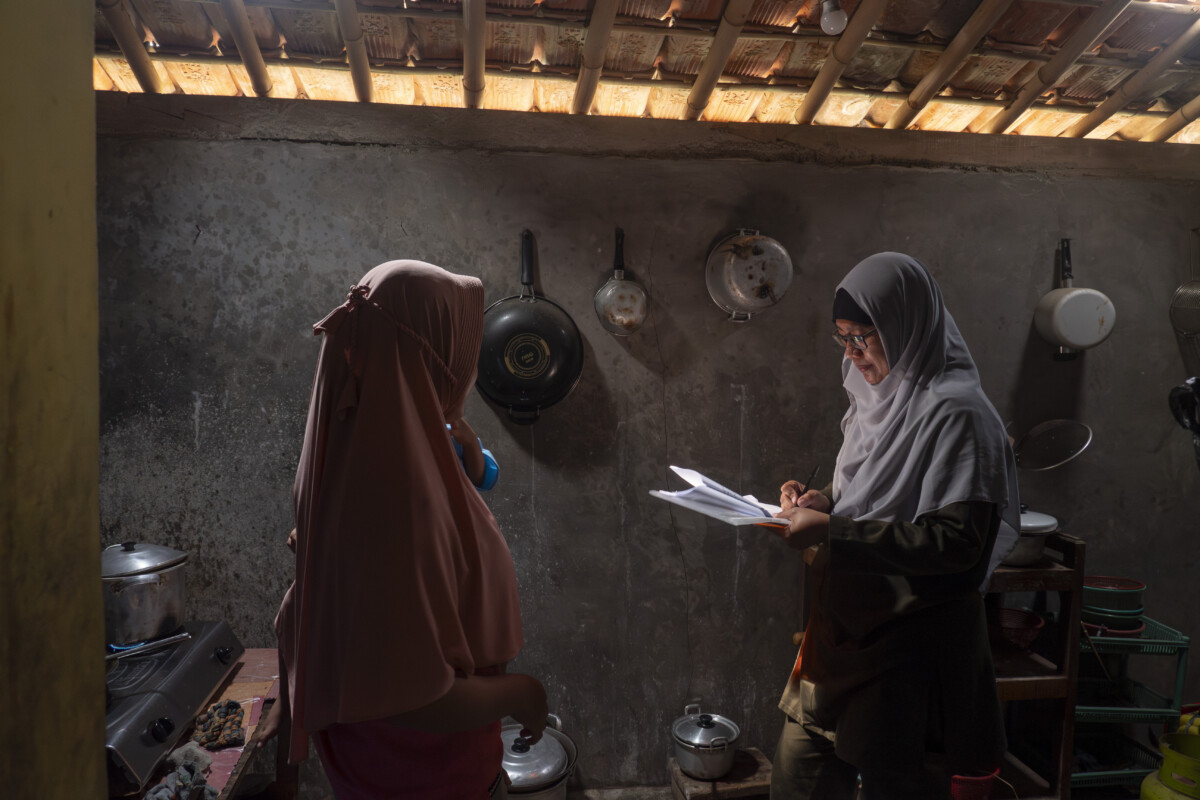2024
Determinant Factors of Children’s Blood Lead Levels in Java, Indonesia, Mansyur et al. The International Journal of Hygiene and Environmental Health. August 2024.
A Snapshot of Lead in Consumer Products Across Four US Jurisdictions, Porterfield et al. Environmental Health Perspectives. July 2024.
Assessment of prevalence of elevated blood lead levels and risk factors among children and pregnant women in Bihar, India. Lu et al. Environmental Research. July 2024.
Structured expert judgement approach of the health impact of various chemicals and classes of chemicals. Marti et al. PLOS ONE. June 2024.
Lead Exposure at Homes as Modifying Factors of Blood Lead Levels Among Young Children in Bihar, India. Nash et al. SSRN. June 2024.
Rapid Market Screening to assess lead concentrations in consumer products across 25 low- and middle-income countries. Sargsyan et al. Scientific Reports. April 2024.
Homemade copper-silver plates as an alternative for cleaning mercury-contaminated tailings from artisanal and small-scale gold mining in Colombia. Rodriguez et al. March 2024.
2023
The burden of diseases and risk factors in Bangladesh, 1990-2019: a systematic analysis for the Global Burden of Disease Study 2019. GBD 2019 Bangladesh Burden of Disease Collaborators. Lancet Global Health. December 2023.
Rapid Assessment of Mercury Contaminated Sites. Ortega-Ramierz et al. Revista Facultad de Ingeniería Universidad de Antioquia. October-December 2023.
Rapid Market Screening Program. Pure Earth. September 2023.
Invited Perspective: An Argument for Changing the Reporting Units for Lead in Blood. Caravanos et al. Environmental Health Perspectives. September 2023.
A Horizon Scan to Support Chemical Pollution-Related Policymaking for Sustainable and Climate Resilient Economies. Kupka et al. Environmental Toxicology and Chemistry. June 2023.
Bovine Lead Exposure from Informal Battery Recycling in India. Ferraro et al. Springer Nature. May 2023.
Diminishing Benefits of Urban Living for Children and Adolescents’ Growth and Development. NCD Risk Factor Collaboration. Nature. March 2023.
Child lead exposure near abandoned lead acid battery recycling sites in a residential community in Bangladesh: Risk factors and the impact of soil remediation on blood lead levels. Chowdhury et al. Environmental Research. March 2023.
Espacio público, construcción de comunidad y participación social. Alfarería en San Jerónimo Ocotitlán: la relación entre la salud y la identidad. Diseño Industrial UNAM. 2023.
Intoxicación infantil por plomo en México: otras fuentes de exposición más allá del barro vidriado (ENSANUT 2022). Salud Pública de México. 2023.
2022
India’s Lead Crisis: A Call to Action. Pure Earth. 2022.
Contribución de la exposición ambiental, para-ocupacional y el uso de barro vidriado a la concentración de plomo en sangre en población infantil mexicana (ENSANUT 2022). Trejo-Valdivia et al. Salud Pública de México. November-December 2022.
Prevalence of elevated blood lead levels and risk factors among children living in Patna, Bihar, India 2020. PLOS Global Public Health. October 2022.
Reducing Disease and Death from Artisanal and Small-Scale Mining (ASM)- the Urgent Need for Responsible Mining in the Context of Growing Global Demand for Minerals and Metals for Climate Change Mitigation. Landrigan et al. Environmental Health. August 2022.
Pollution and Health: A Progress Update. Fuller et al. The Lancet Planetary Health. June 2022.
A Science Policy Panel to Catalyze A Global Response to Chemical, Waste and Pollution. Kupka et al. Science Diplomacy Review. April 2022.
Lead Levels in a Potters Population and Its Association With the Use of Different Glazes: Cross-Sectional Analysis of the Approved Pottery Program. Peralta et al. Frontiers in Toxicology. March 2022.
Research Brief on Hg Retention in AMATAF. Román et al. Pure Earth. 2022.
2021
All lead exposures matter – Authors’ reply. Ericson et al. Lancet Planetary Health. December 2021.
Worldwide trends in hypertension prevalence and progress in treatment and control from 1990 to 2019: a pooled analysis of 1201 population-representative studies with 104 million participants. NCD Risk Factor Collaboration. Lancet. September 2021.
Reducing the Threat of Toxic Pollution to Women and Girls in Low- and Middle-Income Countries. Pure Earth. 2021.
Pollution: A Critical Link for Achieving the SDGs. Pure Earth. 2021.
Pollution in the Kitchen. Pure Earth. 2021.
Piloting Risk Mitigation at a Lead Contaminated Site in Bangladesh. Aziz et al. Geological Society of America. October 2021.
Blood Lead Levels in Low-Income and Middle-Income Countries: A Systematic Review. Ericson et al. The Lancet Planetary Health. March 2021.
Child Lead Exposure Near Abandoned Lead Acid Battery Recycling Sites in a Residential Community in Bangladesh: Risk Factors and the Impact of Soil Remediation on Blood Lead Levels. Chowdhury et al. Environmental Research. March 2021.
Child Lead Exposure Near Abandoned Lead Acid Battery Recycling Sites in a Residential Community in Bangladesh: Risk Factors and the Impact of Soil Remediation on Blood Lead Levels. Chowdhury et al. Environmental Research. January 2021
Health and Economic Impact of Air Pollution in the States of India: the Global Burden of Disease Study 2019. India State-Level Disease Burden Initiative Air Pollution Collaborators. Lancet Planetary Health. January 2021.
2020
Consequences of a Mobile Future: Creating an Environmentally Conscious Life Cycle for Lead-Acid Batteries. World Economic Forum, December 2020.
Análisis de la distribución nacional de intoxicación por plomo en niños de 1 a 4 años. Implicaciones para la política pública en México. Tellez-Rojo et al. Salud Pública de México. November-December 2020.
Use of bacteria community analysis to distinguish groundwater recharge sources to shallow wells. Higgins et al. Journal of Environmental Quality. November 2020.
Elevated Levels of Lead (Pb) Identified in Georgian Spices. Ericson et al. Annals of Global Health. September 2020.
The Toxic Truth: Children’s Exposure to Lead Pollution Undermines a Generation of Future Potential. UNICEF and Pure Earth. 2020.
Probabilistic Estimates of Prenatal Lead Exposure at 195 Toxic Hotspots in Low- and Middle-Income Countries. Zajac et al. Environmental Research. April 2020.
Blood Lead Levels in Children Living Near an Informal Lead Battery Recycling Workshop in Patna, Bihar. Ansari et al. Journal of Health and Pollution. February 2020.
Lessons Learned Through the Journey of a Medical Toxicologist While Characterizing Lead Hazards in the Republic of Georgia. Kazzi et al. Journal of Medical Toxicology. January 2020.
2019
Poster: Education and Remediation Efforts to Reduce Mercury Use and Contamination in the ASGM sector of Puno and Madre de Dios. Espinosa et al. ICMGP Conference. 2019.
Reporte Nacional de Niveles de Plomo en Sangre y Uso de Barro Vidriado en Población Infantil Vulnerable (National Report of Lead Levels in Blood and Use of Lead-Glazed Pottery in Vulnerable Children). Téllez-Rojo et al. Salud Publica (Public Health Mexico). December 2019.
Toxic Site Identification Program in Azerbaijan. Abbasov et al. Environmental Management. December 2019.
Rethinking Aid Allocation: Analysis of Official Development Spending on Modern Pollution Reduction. Swinehart et al. Annals of Global Health. November 2019.
Improving and Expanding Estimates of the Global Burden of Disease Due to Environmental Health Risk Factors. Shaffer et al. Environmental Health Perspectives. October 2019.
Poster: Education and Remediation Efforts to Reduce Mercury Use and Contamination in the ASGM sector of Puno and Madre de Dios. Espinosa et al. ICMGP Conference. 2019.
Remediation of Soil Contaminated with Persistent Organic Pollutants in Sumgait, Azerbaijan. Sharov et al. Environmental Monitoring Assessment. June 2019.



